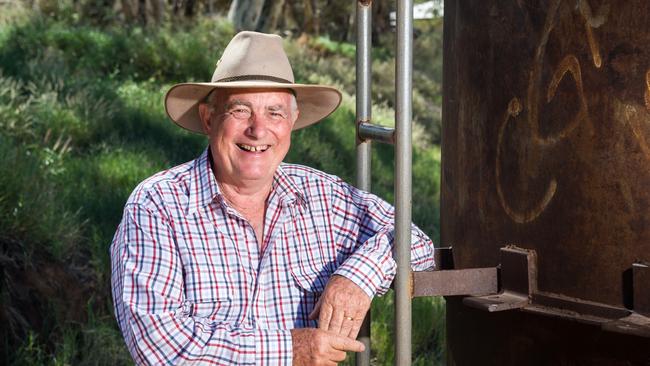How the Territory responded to the region’s worst natural disaster
Twenty years ago Territorians answered the call when their neighbours were struck by one of the worst natural disasters on record. Find out how ordinary Territorians pulled up their sleeves.

News
Don't miss out on the headlines from News. Followed categories will be added to My News.
The Boxing Day Tsunami tore through the Indian Ocean 20 years ago, leaving a path of destruction that still bears it scars today.
The tsunami killed an estimated 225,000 people and displaced a further 1.7 million across South-East Asia and the east coast of Africa.
Given its close proximity to some of the hardest hit regions, Territorians felt the tsunami hit close to home.
Then Chief Minister Clare Martin spoke to Territorians the day after the tsunami hit.

“All of us have been saddened at the events that have been unfolding so close to us,” Ms Martin said.
“Our community here in the Territory is made up of people from each of the countries that have been affected by this tragedy.”
The Territory government’s response was swift — $450,000 was promised to relief organisations in the days following.
The donation was the biggest per capita Australian contribution to the disaster.
Territorians also reached into their pockets to help their neighbours.
Territory-wide, sporting clubs and associations established the NT Tsunami Sports Appeal, eventually raising $92,235.
Local musicians banded together at the Darwin Railway Club to host the Tsunami Appeal concert.
“It’s a bunch of local people that have come together to do something to help the people in need,” event organizer and performer Steve Holliday said at the time.

“You see something like this on the television and you feel the need to do something — this is what we’re doing.”
Assistance was not just financial, many Territorians went to ground zero to share their expertise.
Doctor Kate Napthali joined six Territorians to work on the ground in Indonesia.

“I have no idea what to expect when we land -- I don’t think anybody can prepare for what is ahead of us,‘’ Dr Napthali said.
In one of the worst hit regions, Aceh in Indonesia, infrastructure was totally destroyed
Water expert Graham Ride was seconded by World Vision from Alice Springs to help rebuild the water supply.

“The size of the task is immense as there are still some 400,000 refugees who need to be fed, clothed and provided with temporary shelter and basics but this program has been well organised and executed,” Mr Ride said at the time.
Australian Army engineers from Robertson Barracks also went to Aceh — 150 sappers spent two months in Banda Aceh assisting with rebuilding.

Some of the more unusual aid included the provision of Territory wild buffalos.
In Indonesia, buffalos form the lifeblood of rural communities, performing a number of vital tasks.
It is estimated 30,000 working buffalos were lost in the tsunami.
Musterer Graham “Heffo” Heffernan begun by sending seven wild buffs to Indonesia in September 2006.

Overall the Boxing Day Tsunami touched the lives of many Territorians, especially those from the Territory’s vibrant Indonesian, Thai and Sri Lankan communities.
Territorian and local rugby legend Chandra Seneviratne was visiting family in Sri Lanka when the tsunami hit.
In the aftermath, he thanked Territorians for their overwhelming response to the disaster.
“We just want to say thanks to the Northern Territory public for caring so much — it’s really touched people here that Australia and the world cares,” he said.




